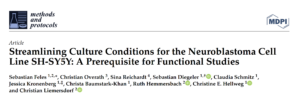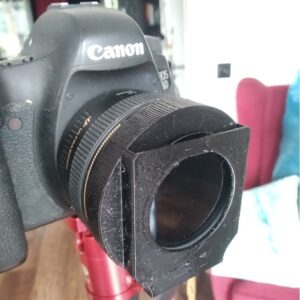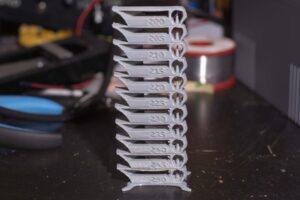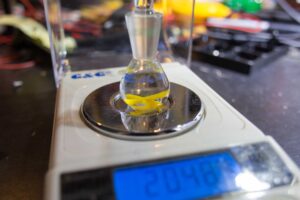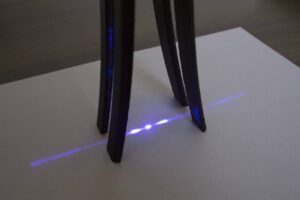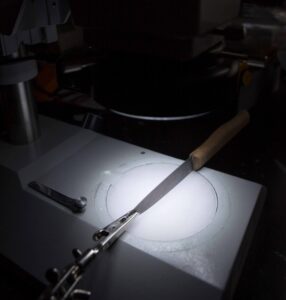- New scientific publication about the neuroblastoma cell line SH-SY5YAfter many years of hard work, my first first author publication was accepted at MDPI: Methods and Protocols. The paper has been published as open access and can be freely viewed at MDPI. The neuroblastoma cell line SH-SY5Y has been a well-established and very popular in vitro model in neuroscience for decades, especially focusing on …
Continue reading “New scientific publication about the neuroblastoma cell line SH-SY5Y”
- UV photography using longpass filterTypical for modern digital photography is the protection of the image sensor against UV-A and UV-B radiation in the wavelength range of 280 – 380 nm1. For this purpose UV blocking filters are used which are nothing else than longpass filters with a minimum transmission in the UV range and a maximum transmission in the …
- Optimization of the extrusion temperature with a heat tower on a Creality Ender 3 Pro and the Prusa slicerIn 3D printing, the extrusion temperature, i.e. the optimum melting temperature of the filament plastic used, is of considerable importance. Manufacturers usually specify a recommended temperature range for this. Depending on the material, this can be very low, such as with Polylactic Acid (PLA), at ~210 °C or very high, such as Polyetheretherketone (PEEK) at …
- Determination of the relative density of filaments with a pycnometerIntroduction All common slicers for 3D printing require the specification of the relative density of the filament. This information has no influence on the printing behavior, but is required to calculate the costs, print volume and length of the required filament.In principle, it is possible to calculate this value using the mass and a little …
Continue reading “Determination of the relative density of filaments with a pycnometer”
- Laser measuring device for the sharpening angle of knives (Laser Goniometer)In addition to the steel alloy, the grinding angle of the blade is decisive for the sharpness and service life of a knife blade. The smaller the angle, the thinner the blade can be ground and the sharper it is. However, this significantly reduces the time in which the knife is sharp. The material removal …
Continue reading “Laser measuring device for the sharpening angle of knives (Laser Goniometer)”
- A microscopic view of dull and sharpened knife bladesKnife blades become dull with the time of their use. On the one hand, the steel wears out (nicks) and on the other hand, the finely ground phase bends. Both depend primarily on the type of use and secondarily on the alloy of the steel, its hardening and the grinding angle. The grinding angle is …
Continue reading “A microscopic view of dull and sharpened knife blades”

